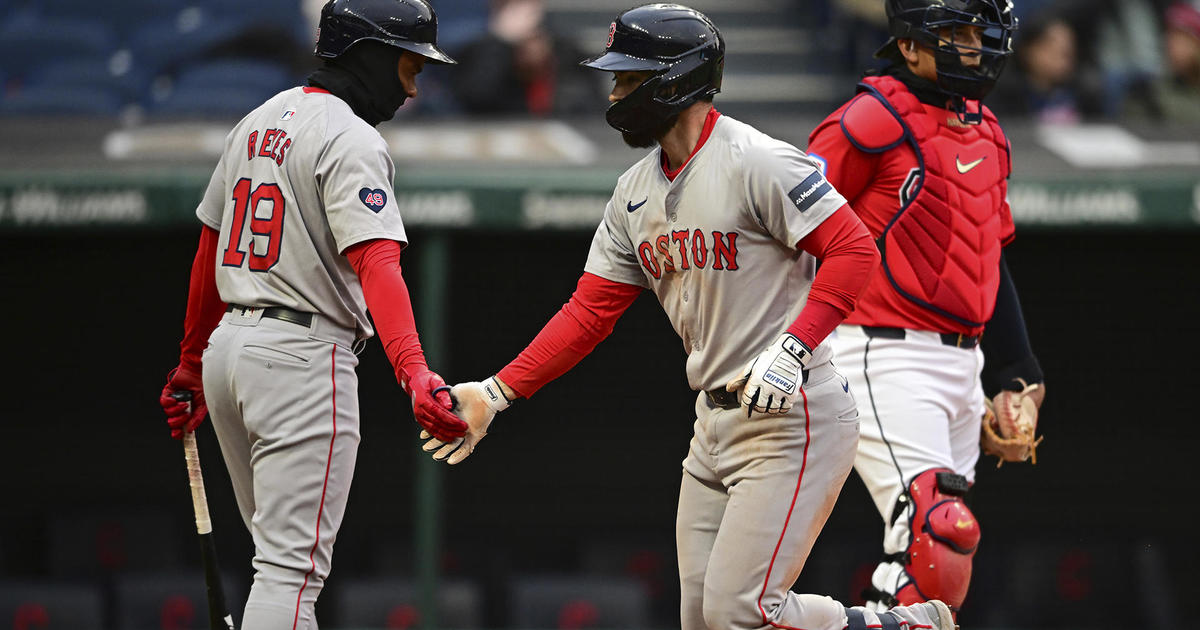Massarotti: How The 2015 Red Sox Have Become Most Expensive Club In Team History
BOSTON (CBS) -- Red Sox general manager Ben Cherington continues to say that the Red Sox are comfortable with the composition of their current pitching staff, which seems curious. On the one hand, some of you believe him. On the other, some of you don't. But if we go purely by the numbers – which is to say, dollars – the Red Sox are likely done with their roster building.
At least for now.
With baseball right around the corner, I thought now might be a good time to look at the Red Sox payroll. In recent seasons, the Sox have hovered right around $175 million, which has placed them below the luxury tax threshold. But already this season, the Sox are committed to between $200-$205 million, and that's before paying a luxury tax rate of 17.5 percent.
Before we get to the particulars of current baseball economics, here's a breakdown of the Boston payroll for 2015, based on average annual salary, which is the value MLB uses to calculate the luxury tax. Also, let's remember that some of these numbers are either rounded off or are slight estimates:
Hanley Ramirez - $22 million
Pablo Sandoval - $19 million
David Ortiz - $16 million
Mike Napoli - $16 million
Shane Victorino - $13 million
Dustin Pedroia - $13.75 million
Rick Porcello - $12.5 million
Rusney Castillo - $10.4 million
Justin Masterson - $9.5 million
Koji Uehara - $9 million
Clay Buchholz - $7.5 million
Allen Craig - $6.2 million
Edward Mujica - $4.75 million
Wade Miley - $6.4 million
Ryan Hanigan - $3.6 million
Junichi Tazawa - $2.25 million
Craig Breslow - $2 million
Daniel Nava - $1.85 million
Alexi Ogando - $1.5 million
Joe Kelly - $650,000
Robbie Ross - $600,000
Xander Bogaerts - $600,000
Brock Holt -$600,000
Brandon Workman - $560,000
Jackie Bradley - $560,000
Christian Vazquez - $520,000
Mookie Betts - $520,000
Total – $181.8 million
So there you have it: $181.8 million, right? Well, no. Under terms of the collective bargaining agreement between owners and players, every team must pay an annual fee – about $12 million – for player benefits (health care, etc.). This number counts against the payroll. Additionally, the Red Sox still have one payment left to the Los Angeles Dodgers for the trade that sent Josh Beckett, Carl Crawford and Adrian Gonzalez to the National League, a figure totaling $3.9 million. Add in an estimated $5 million for the balance of the 40-man roster – minor-leaguers who will be called up for injured players, etc. – and the payroll actually looks like this:
Player salaries - $181.8 million
Benefits - $12 million
Dodgers - $3.9 million
Balance of 40-man roster - $5 million
Total - $202.7 million
Obviously, that number is over the luxury tax threshold of $189 million, which means the Red Sox must pay a 17.5 percent tax on the amount by which they exceeded the tax. In this case, that difference is $13.7 million. The tax figure on the $13.7 million comes to $2.4 million, and while that number isn't technically a part of the Sox payroll, it is obviously a fee that comes as a result of player cost.
Add in the $2.4 million tax (at the moment) and the Red Sox are already up to about $205 million in expenses on this year's team.
A few things to remember here: the Sox likely set $200 million(ish) as a budget this season for this reason: beginning last year, every team in baseball received an extra $25 million annually, through 2021, as part of new national TV contracts. That's free money. That sum alone would account for an increase in payroll from $175 million to $200 million, which means the Red Sox really wouldn't have to sacrifice anything to put a better team on the field. (The Miami Marlins are also an interesting study on the national TV money. They essentially took all $25 million and gave it to Giancarlo Stanton without affecting their internal budgets.)
Also, because Opening Day is still weeks away, the Sox still have time to tweak their payroll. (Salaries are not paid until the regular season starts.) By trading away, say, Allen Craig ($6.2 million) and Edward Mujica ($4.75 million), the Red Sox could shave $11 million off their payroll. That might not seem like much at the moment, but it could give the Red Sox the ability to add a big-name pitcher (or other significant piece) at the trading deadline if there is a need.
Like many teams, the Sox build a cushion into their payroll for midseason acquisitions. If they start the year at $200 million, they are probably willing to spend, say, $210 million. And remember, that $10 million cushion essentially grows in value during the season. (For example: Right-hander Jordan Zimmerman of the Washington Nationals is due a base salary of $16.5 million this year. But if the Sox trade for him halfway through the season, Zimmerman's remaining salary will be only $8.25 million. The Sox might not be able to fit him into their budget now, but they will be able to fit him in later. In that way, their $10 million "cushion" will actually get them a $16.5 million player, albeit for a half-season.)
At the moment, there is no way of knowing what the Red Sox' ultimate budget is. Maybe it's $200 million. Maybe it's $210 million. But what we also know is that the Red Sox saved money last year when they traded Jon Lester, John Lackey, Andrew Miller and Stephen Drew during the season, which undoubtedly played a role in their willingness to further extend themselves this season.
As a result, at the moment, what we have here now entering spring training 2015, is the most expensive team in Red Sox history.
Tony Massarotti co-hosts the Felger and Massarotti Show on 98.5 The Sports Hub weekdays from 2-6 p.m. Follow him on Twitter @TonyMassarotti. You can read more from Tony by clicking here.



